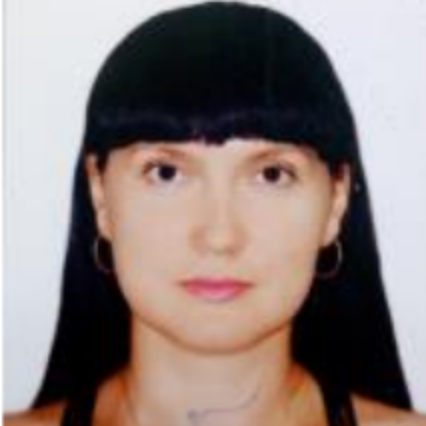International Journal of Image, Graphics and Signal Processing (IJIGSP)
IJIGSP Vol. 14, No. 3, 8 Jun. 2022
Cover page and Table of Contents: PDF (size: 1059KB)
Comparison of Circular and Linear Orthogonal Polarization Bases in Electromagnetic Field Parameters Measurement
Full Text (PDF, 1059KB), PP.58-72
Views: 0 Downloads: 0
Author(s)
Index Terms
Circular Orthogonal Polarization Basis, Linear Orthogonal Polarization Basis, Ellipticity Coefficient, Inclination Angle of Polarization Ellipse Major Axis, Measurement Errors of Polarization Characteristics.
Abstract
This article considers the peculiarities of using circular orthogonal polarization basis for measuring the parameters of an electromagnetic wave. In particular, the angle of inclination of the major axis of the polarization ellipse and the ellipticity coefficient are among measuring parameters. The main expressions for calculation of field parameters in circular and linear orthogonal polarization basis are developed and analyzed. The advantages of using the ring as a measuring antenna in comparison with symmetrical vibrators of the turnstile antenna are substantiated. The expressions obtained in the article for calculating the measurement errors of polarization parameters in a linear orthogonal polarization basis illustrate the multifactorial dependence of the measurement accuracy on the angular and amplitude parameters. In contrast to the linear polarization basis, in case of circular basis, the inclination angle of the polarization ellipse axis can be found by direct measurements of the phase shift, and the accuracy of measuring the ellipticity coefficient is affected only by the error of measuring the ratio of voltage amplitudes, which are proportional to the modules of the field strength vectors of the left and right directions of the circular polarization rotation. This provides better potential accuracy of measurement for the electromagnetic wave parameters when using circular polarization antennas and, correspondingly, more reasonable analysis in the circular orthogonal polarization basis.
Cite This Paper
Ludvig Ilnitsky, Olga Shcherbyna, Felix Yanovsky, Maksym Zaliskyi, Oleksii Holubnychyi, Olga Ivanets, "Comparison of Circular and Linear Orthogonal Polarization Bases in Electromagnetic Field Parameters Measurement", International Journal of Image, Graphics and Signal Processing(IJIGSP), Vol.14, No.3, pp. 58-72, 2022. DOI:10.5815/ijigsp.2022.03.06
Reference
[1]F. J. Yanovsky, H. W. J. Russchenberg, and C. M. H. Unal, “Retrieval of information about turbulence in rain by using Doppler-polarimetric Radar,” IEEE Transactions on Microwave Theory and Techniques, vol. 53, no. 2, 2005, pp. 444–450.
[2]Miguel F. Acevedo, Real-Time Environmental Monitoring Sensors and Systems, Boca Raton: CRC Press, 2015.
[3]Y. Averyanova, A. Averyanov and F. Yanovsky, “The approach to estimating critical wind speed in liquid precipitation using radar polarimetry,” in 2012 International Conference on Mathematical Methods in Electromagnetic Theory. IEEE, 2012, pp. 517–520.
[4]W. Fu, J. Ma, P. Chen and F. Chen, Remote Sensing Satellites for Digital Earth, in: Guo, H., Goodchild, M.F., Annoni, A. (eds) Manual of Digital Earth. Singapore: Springer, 2020.
[5]R. B. Sinitsyn and F. J. Yanovsky, “MIMO radar copula ambiguity function,” in 2012 9th European Radar Conference (EuRAD). IEEE, 2012, pp. 146–149.
[6]A. I. Nosich, Y. M. Poplavko, D. M. Vavriv and F. J. Yanovsky, “Microwaves in Ukraine,” IEEE Microwave Magazine, vol. 3, no. 4, 2002, pp. 82–90.
[7]O. Shcherbyna, M. Zaliskyi, O. Kozhokhina and F. Yanovsky, “Prospect for Using Low-Element Adaptive Antenna Systems for Radio Monitoring Stations”, International Journal of Computer Network and Information Security, vol. 13, no.5, 2021, pp.1–17.
[8]O. Shcherbyna and R. Zadorozhniy, “The log-periodic dipole array antenna for monitoring”, in 14th International Conference on Advanced Trends in Radioelecrtronics, Telecommunications and Computer Engineering (TCSET). IEEE, 2018, pp. 583–586.
[9]O. Shcherbyna and O. Kozhokhina, “Construction Principles of Quadrifilar Helical Antenna”, Telecommunications and Radio Engineering, vol. 79, no. 16, 2020, pp. 1441–1453.
[10]J. Li, B. He, L. Li, A. Zhang, J. Liu and Q. H. Liu, “Capacitor-loaded circularly polarized annular-ring slotted microstrip patch antenna”, in 11th International Symposium on Antennas, Propagation and EM Theory (ISAPE). IEEE, 2016, pp. 13–15.
[11]J. Huang and X. Gong, “A Wide-Band Dual-Polarized Frequency Reconfigurable Slot-Ring Antenna Element Using a Diagonal Feeding Method for Array Design”, in International Symposium on Antennas and Propagation and USNC/URSI National Radio Science Meeting. IEEE, 2018, pp. 477–478.
[12]J. Huang and X. Gong, “A Tri-Band Dual-Polarized Slot-Ring Antenna for Array Design”, in International Symposium on Antennas and Propagation and USNC/URSI National Radio Science Meeting. IEEE, 2019, pp. 1151–1152.
[13]M. Shirazi, J. Huang, T. Li and X. Gong, “A Switchable-Frequency Slot-Ring Antenna Element for Designing a Reconfigurable Array”, IEEE Antennas and Wireless Propagation Letters, vol. 17, no. 2, 2018, pp. 229–233.
[14]C. Chen, C. Li, Z. Zhu and W. Wu, “Wideband and Low Cross-Polarization Planar Annual Ring Slot Antenna”, IEEE Antennas and Wireless Propagation Letters, vol. 16, 2017, pp. 3009–3013.
[15]R. L. Haupt, Antenna Arrays: A Computational Approach, New Jersey: John Willey & Sons, 2010.
[16]R. A. Monzingo, R. L.Haupt and T. W. Miller, Introduction to Adaptive Arrays: 2nd edition, New York: Scitech Publishing, 2011.
[17]R. J. Mailloux, Phased Array Antenna Handbook: 3rd edition, Boston London: Artech House, 2018.
[18]C. A. Balanis, Antenna Theory: Analysis and Design, 4th Edition, New Jersey: John Willey & Sons, 2016.
[19]L. Ya. Ilnitsky, O. Y. Savchenko and L. V. Sibruk, Antennas and Microwave Devices: Textbook for High Schools, Kyiv: Ukrtelecom, 2003 (in Ukrainian).
[20]O. Shcherbyna, L. Ilnitsky, I. Mykhalchuk and O. Kozhokhina, “The Antenna Array with Ring Elements”, in 2017 Signal Processing Symposium (SPSympo 2017). IEEE, 2017, pp. 1-4.





